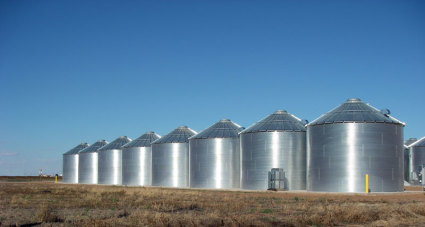
Robohub.org
2 agricultural robotics projects funded under latest Horizon 2020
 On January 13 the EU announced its list of robotics projects funded under Horizon 2020, the EU funding program for research and innovation. Agriculture is one of four “priority domains” for robotics funding under H2020, and of these newly funded (or refunded) projects, two – Flourish and SWEEPER – are explicitly related to agriculture.
On January 13 the EU announced its list of robotics projects funded under Horizon 2020, the EU funding program for research and innovation. Agriculture is one of four “priority domains” for robotics funding under H2020, and of these newly funded (or refunded) projects, two – Flourish and SWEEPER – are explicitly related to agriculture.
Flourish, which has been funded at just over €3.5 Million for 42 months, will be managed by Cyrill Stachniss of the University of Bonn, Germany. It is described both in the H2020 document and on the university’s website as follows:
To feed a growing world population with the given amount of available farm land, we must develop new methods of sustainable farming that increase yield while reducing reliance on herbicides and pesticides. Precision agricultural techniques seek to address this challenge by monitoring key indicators of crop health and targeting treatment only to plants that need it. This is a time consuming and expensive activity and while there has been great progress on autonomous farm robots, most systems have been developed to solve only specialized tasks. This lack of flexibility poses a high risk of no return on investment for farmers. The goal of the Flourish project is to bridge the gap between the current and desired capabilities of agricultural robots by developing an adaptable robotic solution for precision farming. By combining the aerial survey capabilities of a small autonomous multi-copter Unmanned Aerial Vehicle (UAV) with a multi-purpose agricultural Unmanned Ground Vehicle, the system will be able to survey a field from the air, perform targeted intervention on the ground, and provide detailed information for decision support, all with minimal user intervention. The system can be adapted to a wide range of crops by choosing different sensors and ground treatment packages. This development requires improvements in technological abilities for safe accurate navigation within farms, coordinated multi-robot mission planning that enables large field survey even with short UAV flight times, multispectral three-dimensional mapping with high temporal and spatial resolution, ground intervention tools and techniques, data analysis tools for crop monitoring and weed detection, and user interface design to support agricultural decision making. As these aspects are addressed in Flourish, the project will unlock new prospects for commercial agricultural robotics in the near future.
SWEEPER, which has been funded at just over €4 Million for 36 months, will be managed by Jan Bontsema of Wageningen UR, Netherlands. It is described in the H2020 document as follows:
In modern greenhouses there is a high demand to automate labour. The availability of a skilled workforce that accepts repetitive tasks in the harsh climate conditions of a greenhouse is decreasing rapidly. The resulting increase in labour costs and reduced capacity puts major pressure on the competitiveness of the European greenhouse sector. Present robotization of this labour has entered a high level of technological readiness. However, a gap remains which halts the transition from science to economic and societal impact; the so called ‘Technological Innovation Gap’. In the EU-FP7-project CROPS, extensive research has been performed on agricultural robotics. One of the applications was a sweet pepper harvesting robot. It was shown that such a robot is economically and technically viable. The proven hardware and software modules (TRL: 6) developed in CROPS will be used as the groundwork. The successful CROPS software modules based on the Robotic-Operating-System (ROS) will be maintained and expanded in SWEEPER. Also the gripper end-effector will be retained. This patent pending module is able to grasp the sweet pepper without the need of an accurate measurement of the position and orientation of the fruit. In several experiments, it turned out that different growers use different cropping systems ranging in crop density. In SWEEPER, the cropping system itself will be optimized to facilitate robotic harvesting. In CROPS it was concluded that instead of a 9DOF, a 4DOF robot arm is sufficient, greatly reducing costs. To improve the level of robotic cognitive abilities, plant models will be applied to approximate location of sweet peppers. This “model-based vision” will increase and speed up fruit detection. Based on the insights of CROPS, sensors will be placed onto the gripper only. Also a LightField sensor will be introduced, which is able to record both colour and 3D information simultaneously.
The “CROPS” referred to above is Clever Robots for Crops, a program of the 7th Framework, which preceded H2020.
The first H2020 call for proposals was issued last year as a follow up to the EU’s Seventh Framework Programme for Research (FP7), and includes over 100 collaborative robotics projects under the Digital Agenda framework. To learn more about the other robotics projects funded under H2020, see this post by Frank Tobe.
tags: agricultural robotics, Environment-Agriculture, EU, Horizon 2020


